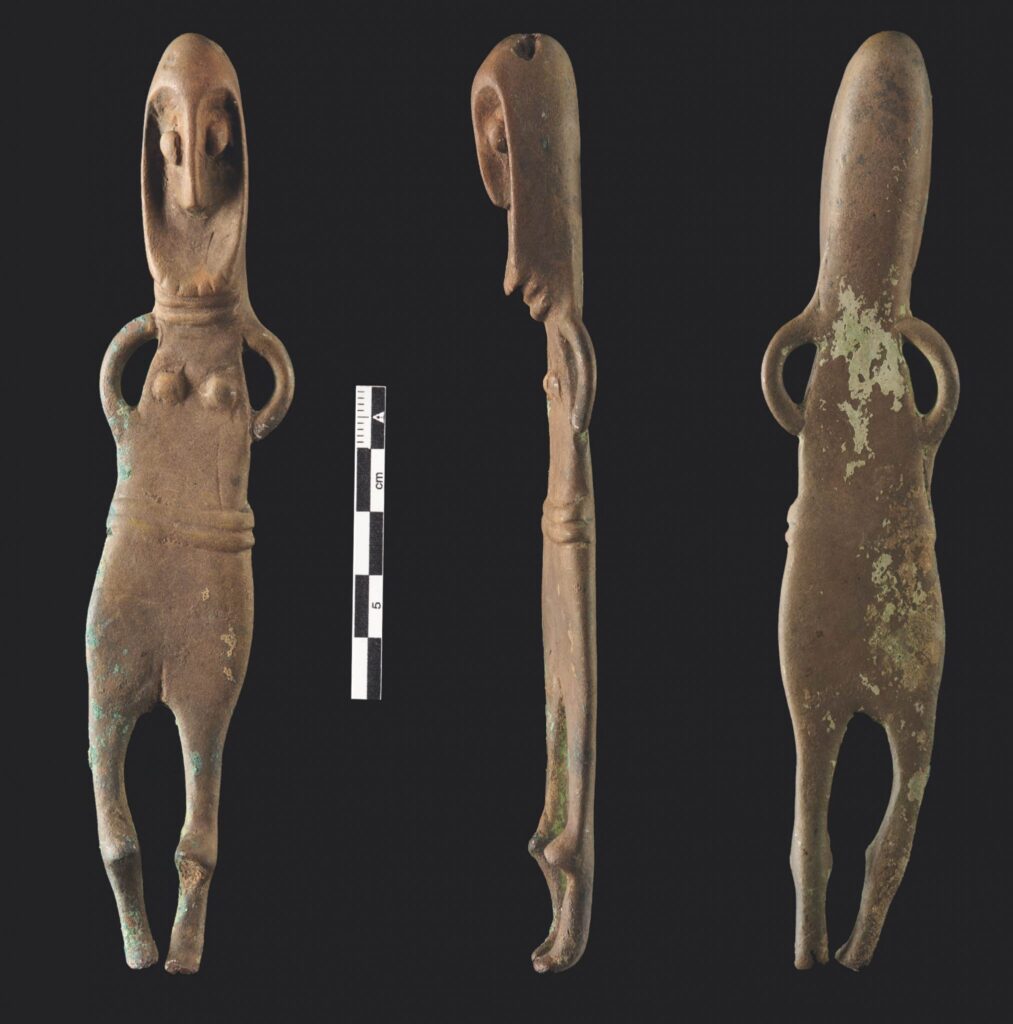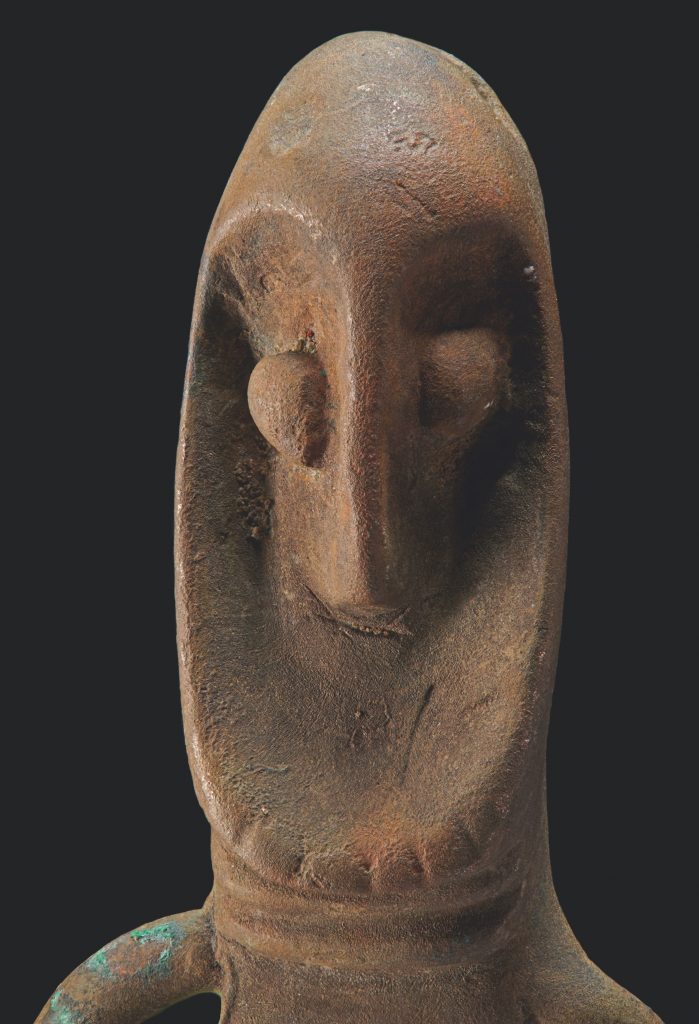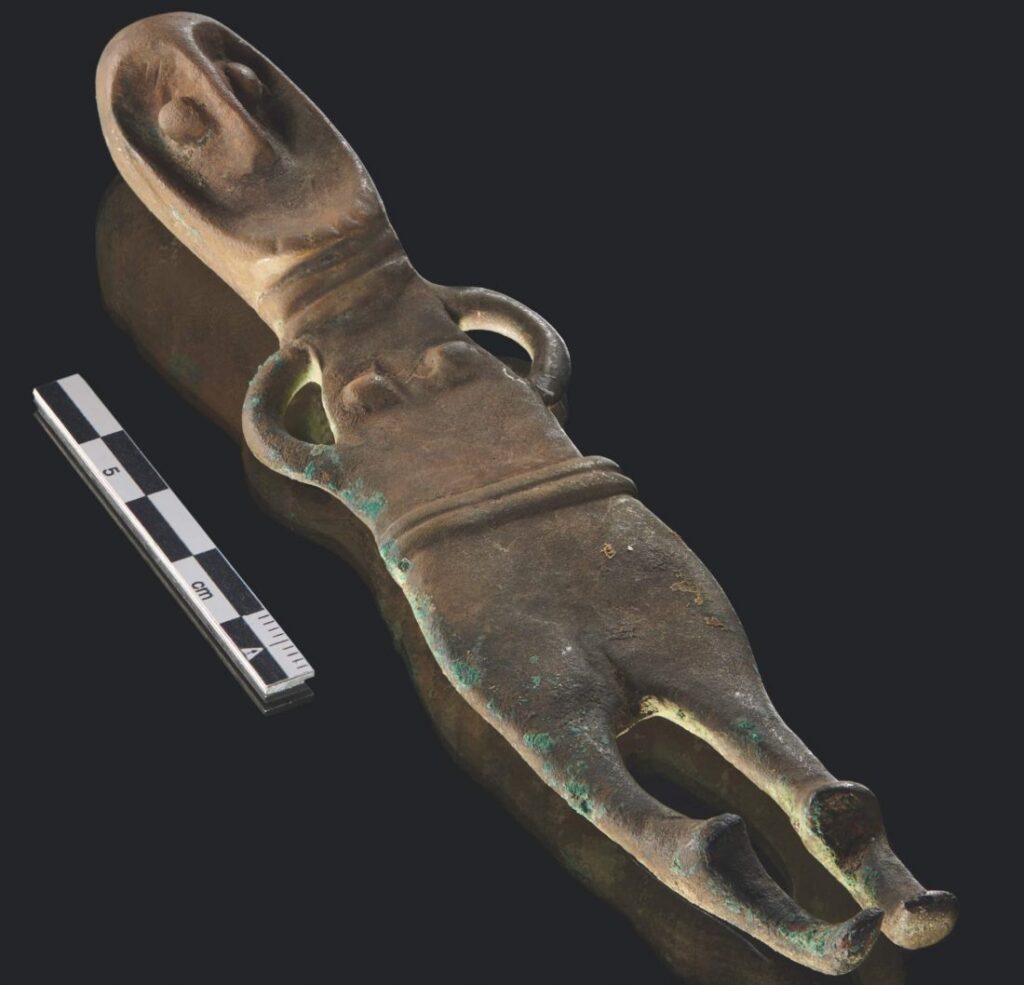2,700-year-old bronze figurine found in Germany’s Tollence River: goddess or weight?

2,700-year-old bronze figurine found in Germany’s Tollence River: goddess or weight?

A Bronze Age female figurine discovered in the Tollense River in northern Germany may have been a goddess, part of an early Scandinavian weight system, or both.
Two years ago, while snorkeling in the marshy streams of the Tollense River on Germany’s Baltic coast, 51-year-old Ronald Borgwardt discovered a bronze figurine while in the streams of the Tollense River. He found a bronze arm ring a few feet away.
The small bronze figurine (14.7 cm tall) weighing 155 grams has an egg-shaped head with a prominent nose, looped arms, a neck ring, two knobs signifying breasts, a belt, an indication of the female sex, and two slightly differently shaped legs. She wears a neck ring and a belt. Typology dates the figurine to the 7th century B.C.
It was only the second small statue of this kind discovered in Germany. In the 19th century, a similar female statuette was found near the village of KleinZastrow, just a few kilometers from the valley crossing, its whereabouts are currently unknown.

However, it was the 13th such figurine found close to the Baltic Sea. All of the previous finds shared similarities in terms of proportion and shape. Most of them have been found near rivers or the Baltic coast. The Tollense is a bit of a double-whammy as it is both a river and a direct connection to the Baltic Sea.
Most of the 13 figurines were found in or close to rivers near the Baltic Sea. Six were found on the Öresund, a strait that separates the Danish island Zealand from the Swedish province Scania. The figurine found in the Tollense is the largest and the heaviest yet.
Researchers have hypothesized that these statuettes may have been used as balance weights based on a weight unit of 26 grams, but with such a limited number of examples, it seemed unlikely they could have been quotidian tools as there would be more widespread evidence of them on the archaeological record.
The 155-gram weight of this example, however, is an almost exact multiple of 26 grams, which may or may not be of significance given that this is the heaviest of the figurines. The second heaviest weighs 133 grams, which is another almost multiple of 26.
At the University of Göttingen, Dr. Thomas Terberger reeled off the weights of some of the figurines: 55 grams, 85 grams, 102 grams, 103 grams, 103 grams, 104 grams, 106 grams, 110 grams, 132 grams, 133 grams. His departmental colleague Dr. Rahmstorf said, “Not every figurine fit the scheme perfectly, but most were quite close.”

According to The New York Times, experts have believed that the economy of Northern Europe during the Bronze Age was based on gift exchange – rather than trade – for quite some time. The notion that the bronze figures were part of an early Scandinavian measurement system was proposed in 1992 by the Swedish archaeologist Mats Malmer.
The Tollense river valley is famed for the great number of archaeological materials and remains from a violent clash that took place there in the early 13th century B.C. It’s possible that the figurine was deposited in commemoration of the conflict that had taken place there centuries earlier.
As a result, the researchers wrote in their paper: The female figures with looped arms are related to distinctive places of the Later Bronze Age landscape, and the recently discovered specimens from the Tollense valley support their close connection to communication routes.
The significance of the lower Oder area for the Later Bronze Age trade is reflected in a concentration of bronze hoards around the island of Usedom, c. 50 km to the east. The wetland context supports the notion of a deposition in a transitional sphere between the real and the underworld.
The figures have been considered as evidence for worship (as the epitome of a goddess), as evidence for trade (as balance weights), or both (‘goddesses of wealth’). The distribution over a relatively small area speaks rather against an interpretation as a Nordic goddess of this time.